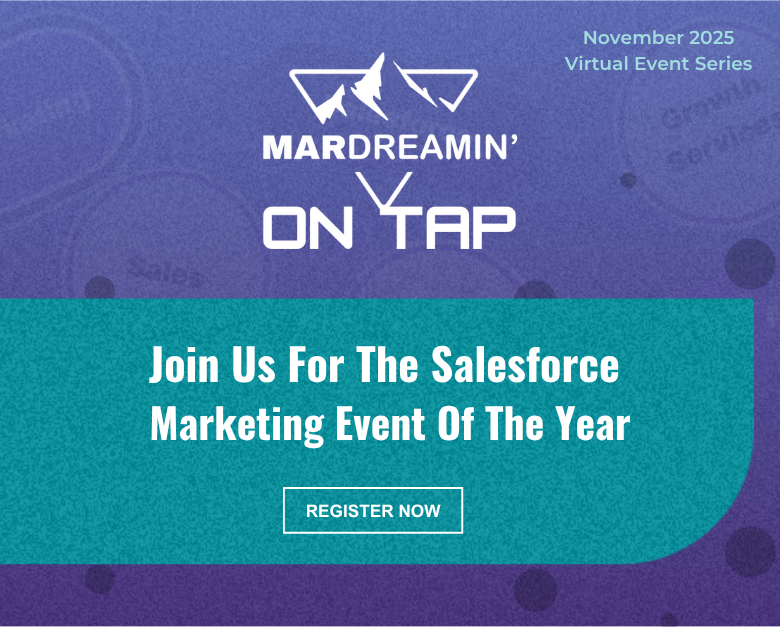As a marketer, you’re eager to use AI for better segmentation, smarter campaigns, or generative content. But a huge piece that can’t be ignored when you’re getting started with AI is getting your data AI-ready.
Up to 87% of AI projects never make it to production, and the top reason is poor data quality (Akaike Technologies, 2025). On the flipside, companies that invest in data quality see a 50% improvement in AI project success (Deloitte AI Institute, 2024).
Meaning your data matters now more than ever. But this isn’t about letting your data hold you back from innovation. It’s about getting a clear, actionable plan for how to improve your data while you get started with AI, so you’re setting yourself up for success and maximizing its value.
Why data quality can’t be an afterthought
AI is only as effective as your business strategy and your data. Data is at the heart of AI, and is used to learn from and gain insights that it uses to perform tasks.
Therefore, when data quality is an issue, that can mean:
- Incorrect predictions and flawed insights
- A hit to customer trust when personalization fails
- Internal teams losing confidence in the tools and systems they’re using
Therefore, taking the time to prioritize your data is worth it to ensure AI is learning from and pulling in accurate insights to power your analytics, workflows, and customer experiences.
Common culprits of bad data (and how to spot them)
Most data issues fall into a few predictable categories. If you’ve ever built a Salesforce report and wondered, “Why does this feel off?”, one of these is probably the reason.
Duplicate records
Multiple versions of the same contact or lead, often with partial or conflicting information. Not only does this skew your reporting, it can lead to awkward missteps in customer communication.
Incomplete data
Records missing key fields like title, lead source, or industry. When critical information isn’t captured or required, it limits your ability to segment, personalize, or even report accurately.
Inaccurate data
Outdated job titles, incorrect email addresses, or other bad intel that throws off targeting and undermines trust.
Inconsistent formatting
Examples: “U.S.” vs. “United States” vs. “USA” in a country field. These inconsistencies might seem small, but they wreak havoc on reporting and automation.
Data silos
On average, companies are juggling data across 367 apps. That can create disconnects between your CRM, marketing automation platform, website, support tools, and more, meaning no single source of truth and missed opportunities for smarter AI use.
If you’re reading this and thinking, “I recognize all of these culprits in our org.” and are feeling overwhelmed, let’s take a deep breath. You don’t need to clean your entire data house in one day.
The Step-by-Step Guide to Get Your Data AI-Ready
You can work in manageable chunks. It all starts with framing the first AI use cases you want to get started with, because this will determine the data you need and thus prioritize where you’ll want to focus for optimizing your data.
Step 1: Identify your AI use cases
Think about: what do you actually want AI to help with? Look at your day-to-day. What’s repetitive and time-consuming? Do you find yourself taking a long time to create campaign briefs, segment audiences, or draft variations of copy to personalize communication?
Once you start creating your list of potential opportunities for AI, start to consider who is involved in the process, what is the goal that AI will help you achieve, and are there any dependencies around it?
As the Sercante team shared during their session, AI Roadmap: The Strategy for Driving Growth with AI, consider the level of effort involved with each use case and the impact on the people involved. You want to aim to prioritize your first use cases that have a relatively low level of effort and a lower impact on your people. This will enable easier pilots and experimentation, so you can see what the initial results are and then make tweaks or scale from there.

Once you know your top 1–2 use cases, you’ll have a clear view of what data will be needed.
Step 2: Perform a data audit
After you understand the data that will be needed, it’s time to audit that data and check for the common culprits. Are there any duplicates, inconsistencies, inaccuracies, or just data that is missing? Check for the signs of dirty data across the key objects and fields that will need to be used for your AI use case.
Here is my go-to checklist for an audit that starts to get your data AI-ready:
- Identify key data objects and fields
- Define data quality metrics
- Identify & categorize data issues
- Document critical data sources and data points
- Assess field usage
- Review knowledge sources for accuracy and AI accessibility
- Review permissions – who can see what
- Assign effort levels & quick wins
Some tools that can help with this process are Data Quality Analysis Dashboards (find it on the AppExchange here), OrgCheck, and other third-party tools on the AppExchange that can assess for data quality and field usage.
Step 3: Establish data standards
Once you uncover the issues, you want to put processes and standards in place to prevent future messes. Documentation that has proven to be effective for teams is creating a data dictionary or a style guide.
Whichever you implement, the data documentation should:
- Answer who is using this data and what this data is being used for
- Establish clear rules based on business requirements
- Define acceptable values, formats, and relationships
- Foster alignment across teams around the data standards
All teams that are involved in using the data should have an understanding of what the proper usage is and how to maintain clean data now and in the future.
Step 4: Cleanse and normalize the data
Now the cleaning begins. Remember to approach this in manageable chunks. Focus on the data that is needed for your top AI use cases first. The actions you need to take for this step will be determined by what you uncovered in your data audit, but here is a general checklist that you can use as a guide:
- Clean up / merge duplicates
- Delete obsolete data
- Correct missing values, errors, and inconsistencies
- Perform mass updates
- Leverage data cleaning tools or scripts
- Update knowledge sources
- Don’t forget to back up your data first!
Tools you can use to help with this process are native duplicate management tools or third-party ones on the AppExchange. There are also third-party tools on the AppExchange for data cleaning and data enrichment that I recommend checking out before diving into this step.
If during your data audit you discovered that silos and disparate systems are a huge issue, and you’re wondering if you’d be a good fit for a customer data platform (CDP) like Data Cloud, reach out to the Sercante team. We can help you navigate what to consider and create your strategy for how to approach the technology in a way that sets your team up for success.
For a preview of our approach to systems like Data Cloud, check out our session on demand, A No-Nonsense Guide to Launching Agentforce and Data Cloud.

Step 5: Build systems to prevent future issues
It seems like the work to clean your data is never done, however, you can do your due diligence to put systems and processes in place to prevent major issues in the future that would hinder your team from getting the full value out of AI.
Prevent bad data entry
Where possible, use picklists to help standardize your data and restrict access to maintain data integrity. Make field requirements for records to be saved with helpful error messages to remind teams of your data standards.
Create data validations or automated updates. For example, setting up a Salesforce Flow that automatically checks the format of an email address when a new Lead is created.
Execute training and create enablement
Make sure that all teams involved with the data are educated on data entry best practices and the importance of data quality. Refer back to your data standards to reinforce the alignment among the teams.
Evaluate data integrations
Remember those data silos? If these continue, data issues will persist and cause your team to continue to do manual cleanup, which is what you’re trying to avoid.
Look at the systems that are disconnected and see what integrations can be made to automatically keep data synced. This is also where a CDP may be considered.
Establish a regular data audit cadence
You want to prevent your database from reverting to the original state you found it in when you first started your data audit. Therefore, aside from putting these systems in place to prevent future data issues, you’ll also want to set a regular cadence for yourself to check your data for the common culprits to uncover any small issues before they turn into major ones.
Clean data means smarter, more effective AI-driven marketing
Getting your data AI-ready is a critical piece to getting the most value out of AI. It’s not about achieving perfection to the point where it gets in the way of getting started with AI. It’s about creating a foundation through manageable chunks that will enable the AI to effectively deliver for your team and your customers.
Data quality is essential for any successful AI-driven marketing strategy, and by using this step-by-step guide, you can take practical, ownership-driven steps to collaborate with your Salesforce Administrator, sales, IT, and customer success teams to improve data readiness.












